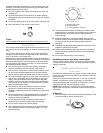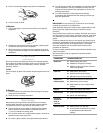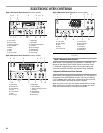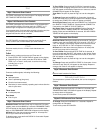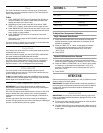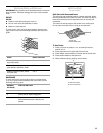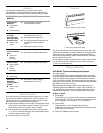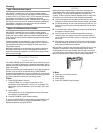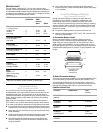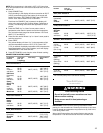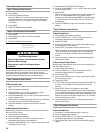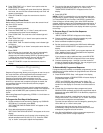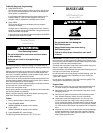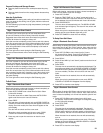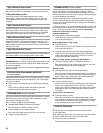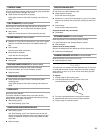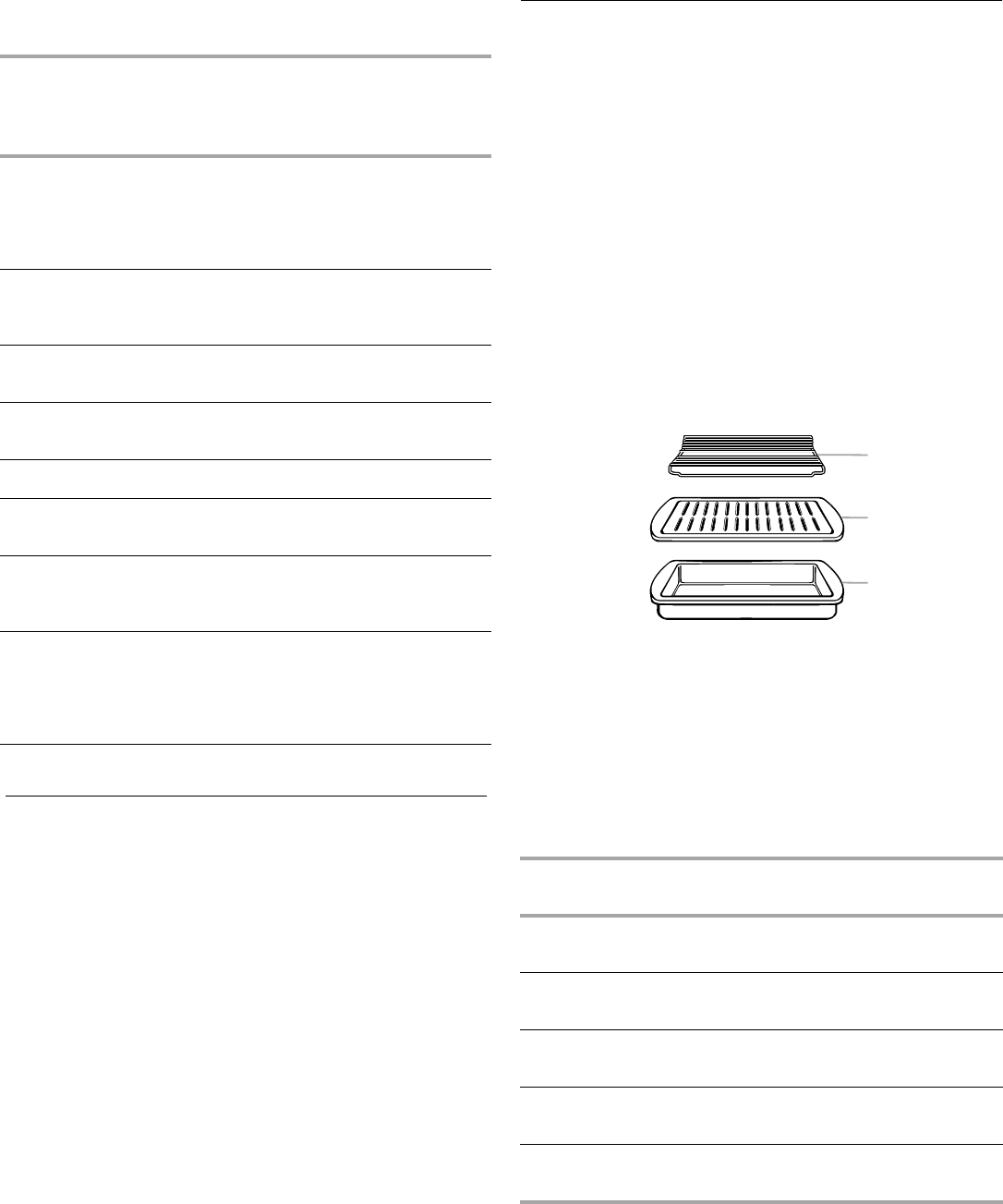
16
BROILING CHART
For best results, place food 3" (7 cm) or more from the broil
element. Times are guidelines only and may need to be adjusted
for individual foods and tastes. Recommended rack positions are
numbered from the bottom (1) to the top (5). For diagram, see the
“Positioning Racks and Bakeware” section.
Convection Cooking
(Style 1 electronic oven control)
In a convection oven, the fan-circulated hot air continually
distributes heat more evenly than the natural movement of air in a
standard thermal oven. This movement of hot air maintains a
consistent temperature throughout the oven, cooking foods more
evenly, crisping surfaces while sealing in moisture and yielding
crustier breads.
Most foods can be cooked by lowering cooking temperatures
25°F to 50°F (14°C to 28°C) and cooking time can be shortened
by as much as 30 percent, especially for large turkeys and roasts.
■ It is important not to cover foods so that surface areas remain
exposed to the circulating air, allowing browning and crisping.
■ Keep heat loss to a minimum by only opening the oven door
when necessary.
■ Choose cookie sheets without sides and roasting pans with
lower sides to allow air to move freely around the food.
■ Test baked goods for doneness a few minutes before the
minimum cooking time with an alternative method such as
using a toothpick.
■ Use a meat thermometer to determine the doneness of
meats and poultry. Check the temperature of pork and poultry
in 2 or 3 places.
Convection Baking and Roasting
(Style 1 electronic oven control)
During convection baking or roasting, the bake and broil
elements cycle on and off in intervals to maintain the oven
temperature, while the fan constantly circulates the hot air.
If the oven door is opened during convection baking or roasting,
the broil element and fan will turn off immediately and the bake
element will turn off in 2 minutes. They will come back on once
the door is closed.
■ For optimal cooking results, do not use aluminum foil.
■ Reduce recipe temperature 25°F (14°C). The cook time may
need to be reduced also.
To Convection Bake or Roast:
Before convection baking or roasting, position the racks
according to the “Positioning Racks and Bakeware” section.
When using two racks, place them on rack positions 2 and 4.
When roasting with CONVECT, use the roasting rack on top of
the broiler pan and grid. It is not necessary to wait for the oven to
preheat before putting food in, unless it is recommended in the
recipe.
To Select Convection Settings
There are five convection presets for time and temperature. Each
can be activated by sequentially pressing the CONVECT key.
The temperatures and times can be changed for each of the
following settings. This helps you to match the convection oven
settings with package instructions or your favorite recipes.
CONVECTION SETTING
FOOD RACK
POSITION
COOK
TIME
minutes
Side 1 Side 2
Steak
1" (2.5 cm) thick
medium rare
medium
well-done
4
4
4
14-15
15-16
18-19
7-8
8-9
9-10
Ground meat patties*
³₄" (2 cm) thick
well-done 4 13-14 7-8
Pork chops
1" (2.5 cm) thick 4 20-22 10-11
Ham slice, precooked
¹₂" (1.25 cm) thick 4 8-10 4-5
Frankfurters 45-73-4
Lamb chops
1" (2.5 cm) thick 4 14-17 8-9
Chicken
bone-in pieces
boneless breasts
3
4
17-20
11-16
17-20
11-16
Fish
Fillets ¹₄-¹₂"
(0.6-1.25 cm) thick
Steaks ³₄-1"
(2-2.5 cm) thick
4
4
8-10
16-18
4-5
8-9
*Place up to 9 patties, equally spaced, on broiler grid.
A.Roasting rack
B.Broiler grid
C.Broiler pan
Function Temperature Time
(default)
CONVECT
(default)
325ºF 0 minutes
CONVECT
COOKIES
325ºF 0 minutes
CONVECT
MEATS
350ºF 0 minutes
CONVECT
CASSEROLES
325ºF1 hour
30 minutes
CONVECT
FROZEN
325ºF 45 minutes
A
B
C



